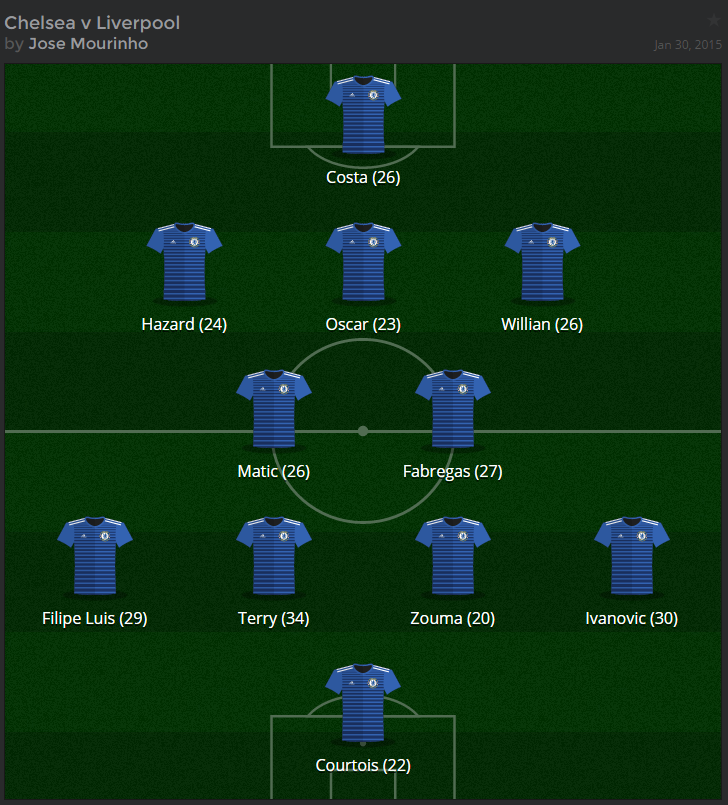Opinion
FootballWhy the future belongs to Chelsea, whatever happens on Saturday
/dnl.eurosport.com/sd/img/placeholder/eurosport_logo_1x1.png)
Published 07/05/2015 at 19:24 GMT
Jose Mourinho may have little in common with a stock trader, but the pugnacious Portuguese seems to have mastered the most basic principle in investing: ‘buy low, sell high.’ Over the last few years, Chelsea have spent shrewdly and sold to the not-so-shrewd. Few clubs stand better prepared to weather the new financial climate of European football.
Eurosport
Image credit: Eurosport
The conditions used to be different, as Chelsea know better than most. In the first half of the Roman Abramovich era, the unrestricted spending of Russian rubles underpinned successive league titles and a handful of domestic cups. When Mourinho arrived, in 2004, the west Londoners were writing out cheques at a rate close to that of a fan favourite signing autographs.
With UEFA’s Financial Fair Play (FFP) now capping clubs’ player expenditure, Chelsea have anticipated the new fiscal terrain expertly. A business-minded transfer strategy has balanced the books, while clever signings have fortified the team.
Some sacrifices have been made. The new biography of Jorge Mendes claims Mourinho had to pass up on Ángel Di María and Falcao last summer. In September, the Special One was asked by Eurosport whether his club could have made a similar deal to Manchester United’s £59m move for Di María. “Chelsea not, for sure, because Chelsea is working in relation to the Financial Fair Play,” he said. “We are making money to be able to spend money. In every transfer window Chelsea is losing players, is selling players.”
The only compensative mechanism for inferior revenue is to trade efficiently. For Chelsea, the key has not so much been buying low as selling high. All top clubs want young players. The difference is that, when their expensive talents turn into mere squad players, most clubs keep them anyway granting they offer something to the team. That is not the reality at Stamford Bridge. Any high-value player standing outside of the starting line-up risks being auctioned off.

Standing out are three signings from 2011. Romelu Lukaku arrived from Anderlecht for roughly £20m; this summer he joined Everton for £28m. Juan Mata came from Valencia for £23.5m; last year he signed for United in a £37m deal. David Luiz was worth a reported £25m when bought from Benfica; seven months ago he cost Paris Saint-Germain an exorbitant £50m.
Chelsea could have kept these players. Lukaku is 21, Mata 26 and David Luiz 27. Were it not for FFP, some might have stayed, if not all. But the principle of value for money overrides that of stability in personnel.
There is also the more common strategy of buying low. Or should that be, buying young. Indeed, while the similarities between the modern transfer market and the stock exchange are many, there is a variable that applies solely to football: the notion of maturity. The value of young players is invariably likely to increase. For Chelsea, even a youthful flop can return a considerable fee.
Take, for instance, Kevin De Bruyne, who arrived from Genk in 2012 for £6.7m and was sold to Wolfsburg for a reported £16.7m in 2014. Or remember Daniel Sturridge. Hardly a success story at Stamford Bridge. He struggled to settle, and only shone once moved on to Liverpool. For Chelsea’s part, two misjudgements occurred. Yet they paid £6m for him and received £13m.

Chelsea’s more established signings are not particularly old either. Since 2013, Chelsea have bought players such as Willian, Nemanja Matić, Kurt Zouma, André Schuerrle, Mohamed Salah and Diego Costa. None is past 26. With the club now eager to strengthen in January, the re-sale value such squad members possess might help facilitate another addition. Schuerrle is the most likely player to be traded away, his age of 24 making him an attractive proposition, with Juan Cuadrado coming in.
This advantage also means that the first team can stay coherent. There is no need for immediate mass renewal. In the league cup semi-final against Liverpool on Tuesday, Chelsea’s line-up was Thibaut Courtois (22 years old); Branislav Ivanović (30), Zouma (20), John Terry (34), Filipe Luís (29); Matić (26), Cesc Fàbregas (27); Willian (26), Oscar (23), Eden Hazard (24); Diego Costa (26). The average age was 26.
Their next game is on Saturday against Manchester City, where the situation is less rosy. Earlier this season, Soccerex reported City’s squad to be the oldest in the league, with an average age of 28. A large part of Manuel Pellegrini’s favoured line-up are either close to or done with receiving their 30th birthday cake. The club is nearing a tipping point where a high number of faces might require replacements. And that needs to happen within the constrictions of FFP.

City have already spent lavishly. The same Soccerex report said they had spent a higher net sum over the last six summer transfer windows combined than any other club in Europe. That includes Real Madrid, who have offset record-breaking acquisitions with profitable sales of profiles such as Gonzalo Higuaín, Mesut Ozil and Di María.
The re-sale value of City’s team appears limited. Most players are on grand salaries and, considering the potential market price for a 29-year-old James Milner or a 31-year-old Yaya Touré, it appears unlikely that sales alone can fund a proper squad overhaul.
And so even if City should beat Chelsea tomorrow, the Londoners are favourites in the long run. The future, it seems, belongs to the wheeler dealers.
Thore Haugstad - @haugstad1006
Scan me
Related Topics
Share this article
Advertisement
Advertisement